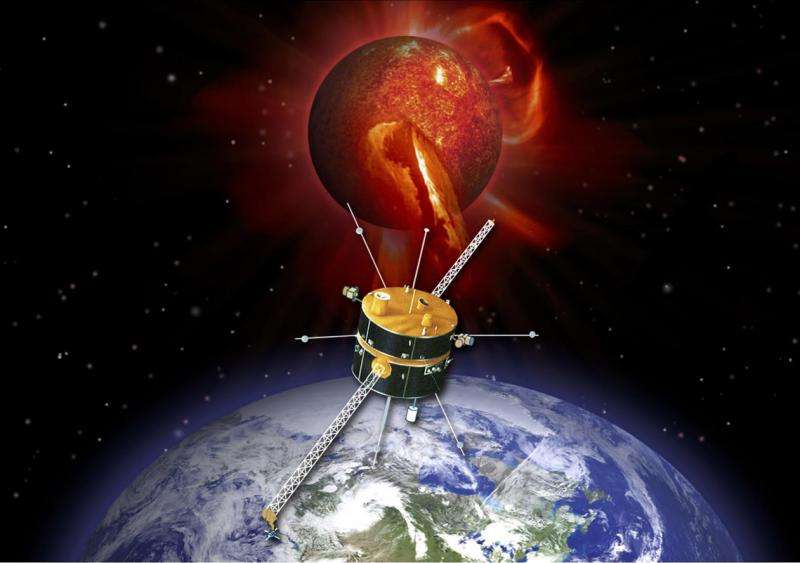The stability of the solar wind

NASA's Wind spacecraft observes the solar wind before it impacts the magnetosphere of Earth. Launched in 1994 into an orbit more than two hundred Earth-radii away, one of Wind's prime objectives is to investigate the basic physical processes occurring in the ionized gas in the near-Earth solar wind. One of the open issues is the stability of the solar wind plasma.
The three main particle species in the solar wind are protons, electrons, and helium nuclei (two protons and two neutrons). Unlike particles in a conventional dense gas, the charged particles in the wind can have motions and collective behaviors that are not characterized simply by their temperature. For example, the wind can host regions of different temperatures and densities that propagate along as waves, or that dissipate, and the energy in the wind can be converted between different modes. Moreover the wind can host two unmixed gases with different temperatures and flows in the same vicinity, and these regions can react differently to the magnetic fields that are present.
CfA astronomer Mike Stevens and his colleagues used the Wind spacecraft to analyze two key instabilities in the wind, the first such analysis that includes all three species of particles. One of the instabilities results when the forward pressure is large enough to generate ripples in the plasma, and the other results when pressure builds up within dense clumps in the wind, causing them to break up. The scientists concluded from the Wind data that protons were the species that dominated for both of these instabilities, but that the presence of the other two species was significant, contributing about one third of the observed effects for each instability. They also concluded that for the majority of the time, the solar wind is stable. The new results will be useful for other situations involving astrophysical plasmas.
More information: Multi-Species Measurements of the Firehose and Mirror Instability Thresholds in the Solar Wind. arxiv.org/abs/1606.02624
Provided by Harvard-Smithsonian Center for Astrophysics





















